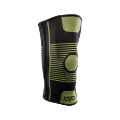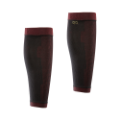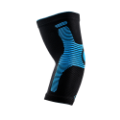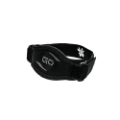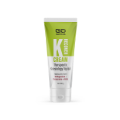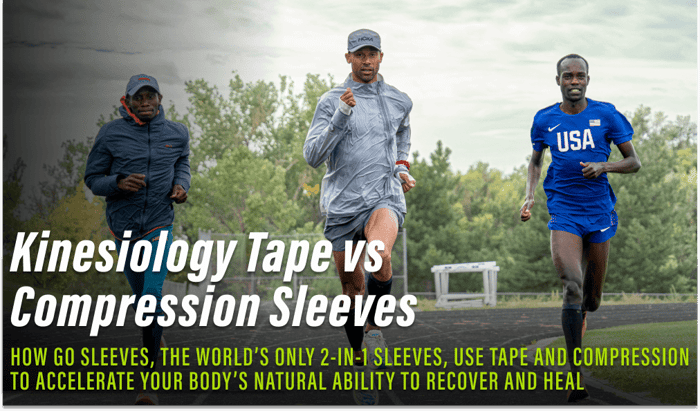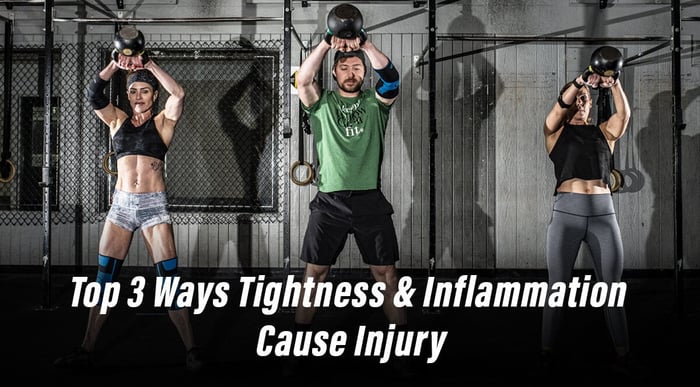Let’s compare kinesiology tape vs. compression sleeves, identifying the unique benefits for people looking to overcome injuries, staying active or perhaps maximizing their performance. Each technology manages pain, injury prevention, and recovery with its own set of benefits. From shin splints to knee injuries and even plantar fasciitis, both methods are popular pill-free ways to deal with pain and stay active.
Whether you're contemplating kinesiology tape for injuries or whether to use compression sleeves for competing in your sport, we'll try to help you sort through the options.
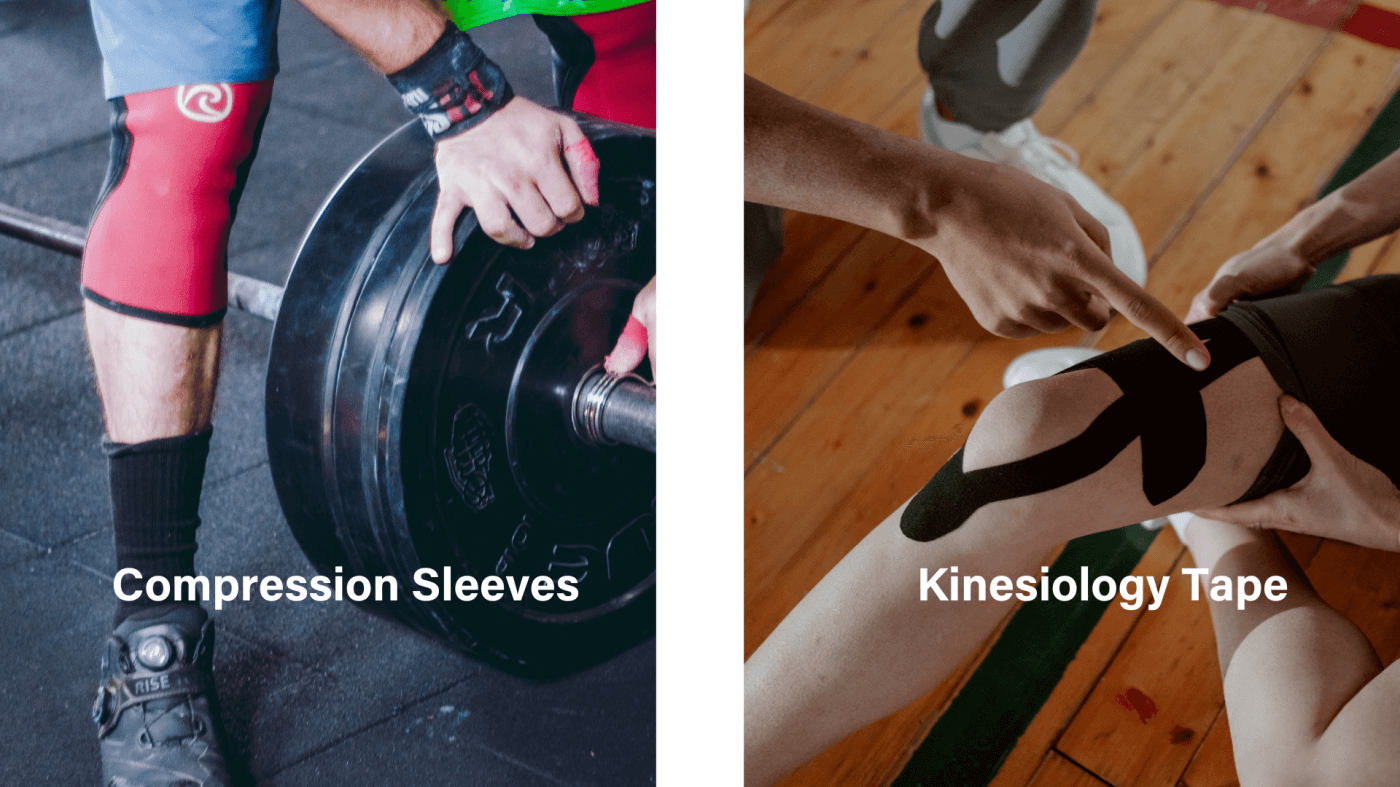
Price & Durability
Today, there are many brands of kinesiology tape available: KT Tape, OK Tape, TheraBand, and RockTape are just a few. They typically cost between $9 to $15 dollars per roll, or $26 to $28 for water-resistant versions. However, the tape is not reusable and once it starts to roll due to movement or sweating, the same tape cannot be reapplied.
Compression sleeves can greatly vary in price. For a more affordable sleeve, you can find them around $10, which will simply compress and nothing else. For a compression sleeve that features a patented design made from premium materials and delivers enhanced support and durability, you can expect to invest upwards of $80-100 for a compression sleeve. It’s important to remember that even though compression sleeves have a higher price point, they are reusable. Typically, the more you spend, the longer they last and the more comfortable and effective they will be.
Applications
Kinesiology tape requires skill and knowledge to apply. While some tapes can be self-applied, many tape techniques require a physical therapist or well-trained partner to apply them for you. Depending on the body part the tape is addressing, a taping session can last 10-15 minutes or even longer. Since kinesiology tape can be applied to any part of the body in virtually any pattern, there are limitless use cases for kinesiology tape. 
Compression sleeves require no training or skill to use. Just slide them on in seconds and off you go. However, it’s important to find that delicate balance between snug enough to provide adequate support while staying in place, yet not so tight that the sleeve is restricting movement.
Effectiveness
When applied properly, kinesiology tape can relieve swelling and inflammation by pulling skin away from painful tissues, decreasing pressure, and increasing blood flow that promotes the body’s natural healing.
Compression sleeves squeeze your veins to speed up blood circulation. By making the size of the vein smaller, compression sleeves create faster, more efficient circulation. When a compression sleeve is stable and snug, they typically alleviate pain and support ligaments and muscles while helping to prevent injury.
Kinesiology tape is the opposite mechanism to compression in that it stretches and lifts the skin to create space in the skin tissues. By creating space in the skin tissues, studies have shown that kinesiology tape takes pressure off the pain receptors and increases blood flow into key muscles, ligaments, and tendons to counter pain while reducing injury recovery time. The same mechanisms also deliver benefits while active and while recovering from activity. By promoting blood flow and increasing lymphatic drainage, kinesiology tape can assist in reducing fatigue and tightness when worn during activity while also accelerating the recovery time in between activities.
GO Sleeves - The Benefits of BOTH Tape and Compression
While it's possible to wear kinesiology tape and compression sleeves at the same time, you’re doubling your cost and increasing your application time. If you want the most convenient and effective way to achieve all the best benefits of kinesiology tape AND compression sleeves, you’ll want to consider GO Sleeves.
GO Sleeves offer the first and only compression sleeve products with built-in kinesiology taping technology that supports key joints, ligaments, and tendons. Every sleeve contains silicone strips that trigger natural pain reduction, increase recuperating blood flow, and aid in lymphatic drainage. The following diagrams illustrate the kinesiology mechanisms delivered by GO Sleeves and their recuperative benefits.

When to Use GO Sleeves
Compression sleeves are worn for various reasons, but we find it methodical to have goals for our applications. These goals are:
- Pain mitigation
- Recovery
- Load Management
Having pain creates many issues related to movement. When we are in pain, we move much worse! As explained above, reducing the notion of pain with Go Sleeves will create a better and freer movement environment for every athlete. Using the sleeve in this manner may help with pain reduction:
- Use the Go Sleeve during a training session if in consistent pain. The skin drag effect can reduce discomfort while on.
As we train and exercise hard, our legs become heavy with accumulated blood and lymph. Compression is a great way to aid with increased flow when this occurs. Additionally, having the medical grade silicone is an even better way to lift the skin and fascia to create space within all the tissues of a body part. All those layers need space for fluid to move back through the heart. This recycling method is the best way to recover from hard training.
- Use the Go Sleeve post workout out for 2 hours to aid in fluid regeneration.
Load Management is a newer concept with athlete programming and actions of recovery. It is a practice that involves monitoring and managing an athlete's training regimen, performance, and rest to improve their wellness and performance, as well as reducing overload and therefore reducing risk of injury. It can help athletes recover and perform better over time by temporarily reducing the amount of training, as well as increasing recovery treatment methods for practice or competition.
- Use the GO Sleeve for daily management during team travel, or if you’re on your feet for work or school, to aid in recovery.
One of the more unique characteristics of GO Sleeves is their ability to uniformly apply the benefits of kinesiology while being engaged in very active sports and activities. For example, UltraRunner Max Janatsch illustrates the combination of therapeutic benefits of GO Sleeves combined with no-slip, no-bunch support while on a training run on the beach.

GO Sleeves are super-lightweight, breathable, machine washable, reusable and currently offer in knee sleeve, calf sleeve, and elbow sleeve form-factors.
This blog post was written by Dr. Ethan Kreiswirth and Josiah Middaugh.
Dr. Kreiswirth earned his PhD in Athletic Training from Rocky Mountain University of Health Professions. He is currently the Director of Education for Go Sleeves, which discusses the neurological and fascial changes of kinesiology technology. His research has centered around musculoskeletal injury within the sport of Brazilian Jiu Jitsu and is the owner of Black Belt Sports Medicine, which oversees medical services for the International Brazilian Jiu Jitsu Federation (IBJJF). Additionally, Dr. K provides continuing education lectures on blood flow restriction (BFR) and neurological adaptations to various modalities in athletic training for RockTape and SmartCuffs, as well as a lector for El Camino College. As the the former Director of Education for RockTape, he has also been a Professor and Graduate Program Director for Rocky Mountain University, Concordia University Irvine, and California State University Dominguez Hills.
Dr. K has worked with many Olympic, Pro, College and high school sport teams as a Certified Athletic Trainer since 1996. He has been a contributing author in peer-reviewed journals’ such as International Journal of Athletic Therapy and Training, Journal of Athletic Training, Athletic Training and Sports Health Care, International Journal of Sports Physical Therapy, and Journal of the Canadian Chiropractic Association. Dr. K resides in Los Angeles, California and enjoys a competitive lifestyle of Brazilian jiu Jitsu and bike racing on road, dirt, and track.
Josiah Middaugh is the Head of Performance Science at GO Sleeves and has a Master’s Degree in Kinesiology, 20 years of experience working with athletes of all kinds, and a long list of multi-sport racing accomplishments.
Middaugh’s professional racing accomplishments:
- 2015 XTERRA World Champion
- 15-Time XTERRA USA National Champion
- 6-Time USSSA National Snowshoe Champion
- 4-Time Fat Bike World Champion
- 10-Time GoPro Mountain Games, Ultimate Mountain Challenge Champion
- 2-Time USAT Winter Triathlon National Champion
Middaugh’s favorite ways to use GO Sleeves? After training and races, he wears GO Sleeves to accelerate recovery and to mitigate calf muscle and Achilles tendon tightness. Learn more about Josiah’s coaching practice for endurance athletes at middaughcoaching.com.
